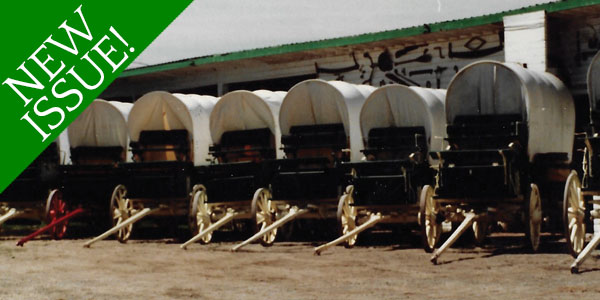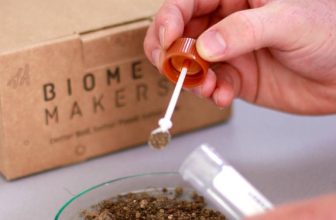

The Pat Miller Wagon Collection from Ronan, Montana
by Jane Miller Arneson of Polson, MT
Pat Miller was born in Eastern Montana to a family who lived on a large ranch. His father was a stockman with hired men. He bought and sold cattle, horses, and sheep. He always had several teams of draft horses. Early on he became interested in raising Shetland ponies. He bought registered ponies that originated in the Shetland Islands by way of Minnesota. Pat and his brother had memories of riding ponies on the prairie, watching the hired men break horses, and watching round ups.
At the age of six his life changed – his father died, this happened at the beginning of the Depression. His mother was left with four small children and she moved to the Mission Valley in western Montana, a plan that was in the works before his father died. At one time his mother managed to have some of the ponies brought from the eastern Montana ranch to Ronan. Pat was always drawn to ponies, horses, and wagons. While growing up he built a stagecoach out of packing boxes, and pulled by ponies, he used it to deliver groceries in the small town of Ronan.

After graduating from Ronan High School and serving in the Army Air Corp as a tail gunner with a B-24 bombing crew, he and his wife, Clara, set about raising their nine children on a farm west of Ronan. They continued to raise ponies. He built a better stagecoach, and had it in parades with a six-up of Shetland ponies. Over the years while his children were growing up he made more pony wagons. He made another improved stagecoach, a covered wagon, a surrey with fringe on top, two buckboards with seats for carrying people and a hayrack to break ponies to drive.
In the 1960’s we bought Tally Ho, a four seated horse-drawn passenger hauling wagon that had been used in Glacier National Park to haul guests from the railroad station to the hotel. We have used this wagon in many parades and draft horse shows, as well as large gatherings.

In the mid 1970’s we started collecting Percheron horses, and building wagons for horses. In 1976 we went on our first wagon train with one covered wagon and a team of horses. The wagon train started in Dixon Montana, and followed the Flathead River to Sloan’s Bridge, then to the Buffalo Bridge, camping three nights. We hauled the wagons and horses to Dixon. To start the train, and hauled them home from Buffalo Bridge. It was about a fifty mile trip and had about twenty wagons and assorted out-riders. The next year we had two covered wagons and two teams. A few years later instead of hauling wagons and horses we just drove from our ranch to Sloan’s Bridge, and home to Buffalo Bridge, hauling horses and wagons was a lot of work. At times we took three wagons and sometimes would lend a wagon. We went on seventeen consecutive wagon trains.
We raised Percheron horses from 1977 until a little after dad died in 2002. We always had two stallions. In 1982, we were the leading Percheron breeders in the nation, having registered fourteen colts that year. At this same time we were building horse-sized wagons, including two show wagons, a two seated buckboard, an army escort wagon, and many covered wagons. Building covered wagons involved locating and buying the undercarriage. The box was built out of custom-cut fir tongue-andgroove lumber from Plum Creek Lumber Co, where dad worked. He made the bows with laminated fir lath on a jig. Each wagon had a spring seat, two tool boxes, a water barrel, a three-quarter bed in back, and a canvas top, sewed by mom, my sister, or myself. These fit loose until they got rained on and then they tightened up. Over the years after dad retired he built and sold fifty-one covered wagons. Along the way we collected some wagons that did not need to be restored; they were a grain wagon and a landeau.

One of dad’s biggest accomplishments was building an authentic stagecoach. With plans obtained from the builders of Wells Fargo, which were in the style of the Abbot Downey Coaches, this was built with precision. The wheels were made by Dave Engels in Joilet, Montana, they had roller bearings. The axles were ordered from the Amish Supply. The wood construction and the irons were made with tender loving care by dad. The coach is supported on leather straps which provides a fairly comfortable ride. It is upholstered in leather, and has a leather boot to hold luggage. The coach has room for several people inside, with the driver and shotgun on top, room for two people behind the driver, and two people facing backward on the back. Additional luggage could be carried on top. There is a kerosene lamp on each side, and it is painted the traditional red color, and has gold pin-striping. Stagecoaches were driven with four to six horses. We have had this stagecoach in many parades in western Montana.

In the past few years my sister and I have sold the ranch and now have the wagons in storage. At this time we are offering them for sale. We love these wagons as they have been a big part of our lives. Our hope is that whoever buys them will enjoy them as much as we did.
Jane Miller Arneson
Polson, MT





